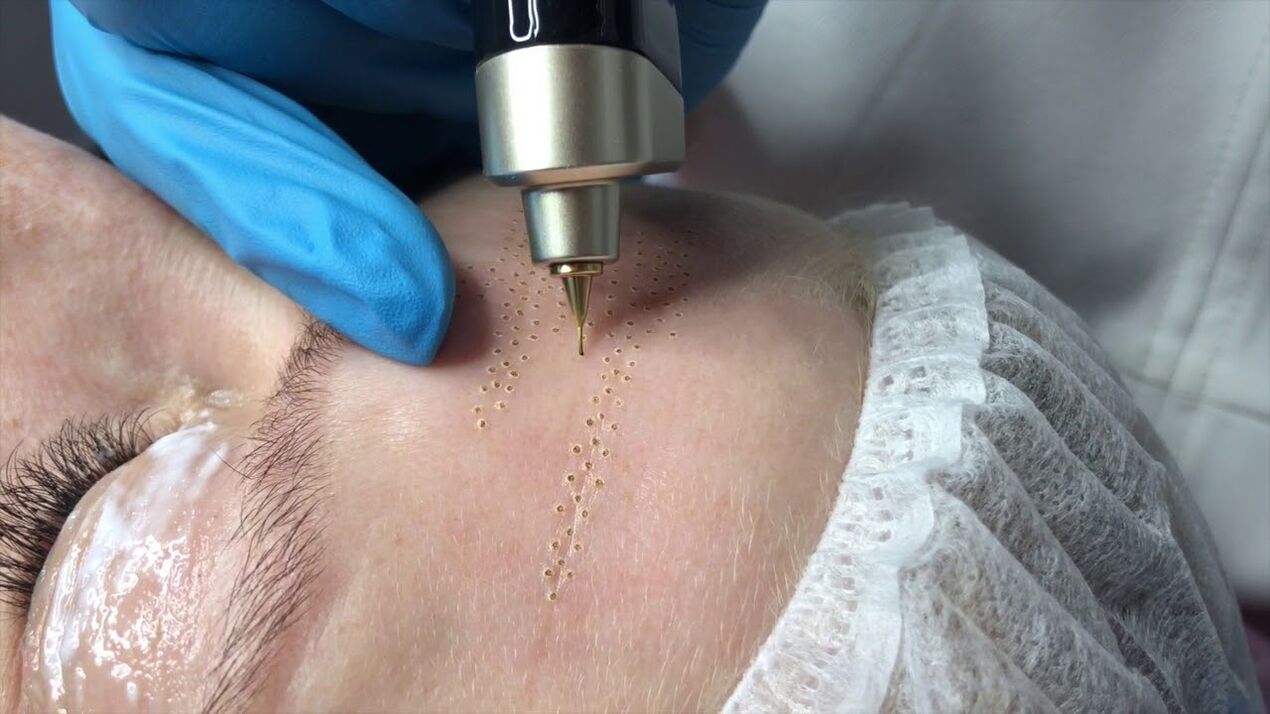Skin rejuvenation is the most popular field in modern aesthetic cosmetology. Moreover, nowadays, progressive non-invasive (without compromising skin integrity) and even non-contact exposure methods are increasingly preferred. One of the innovative and effective methods is plasma rejuvenation (non-surgical plastic surgery).

Most, if not all, skin rejuvenation types are based on the principle of controlled skin damage, triggering the regeneration process, which ultimately leads to a reduction in the visible signs of aging. The plasma method works the same way, with just a few tricks.
First, the active ingredient, plasma, is a high-energy ionized gas. Second, the nitrogen used is chemically inert and suppresses tissue combustion, displacing the oxygen required for the oxidation process. Because of this, the skin layers are damaged from the plasma (due to heating, fission, and evaporation) but do not burn out as with the ablative laser, so no open wounds occur. This approach reduces the risk of side effects such as scars, infections and discoloration.
What to expect from plasma rejuvenation
Reduction of age-related lesions, prevention of their progression and early onset. The procedure has a pronounced lifting effect (due to the "evaporation" of the skin flake), smoothes the topography of the skin by reducing the depth of dynamic and static wrinkles, softens the course of natural folds, improves and evens out skin tone. Moreover, the result appears not only shortly after starting treatment, but gradually increases over several months. The greatest effect is expected after about 3 months.
Indications for use
- Non-surgical blepharoplasty.
- Treatment of stretch marks and removal of scars.
- Acne and post-acne treatment.
- Wrinkles around the eyes (crow's feet), removal of wrinkles around the mouth (pouch).
- Elimination of skin looseness: neck, abdomen (postpartum abdomen).
- Align the contour of the face.
- Removal of fibroids, nevi, papillomas, age spots, xanthelasmus, dyskeratosis.
Contraindications
- Diagnosed with oncological diseases of any location.
- Presence or suspicion of pre-cancerous skin diseases in the affected area. Other benign tumors are not contraindicated for plasma rejuvenation.
- ENT diseases in the acute stage (sinusitis and other forms of sinusitis, rhinitis, rhinosinusitis).
- Pregnancy. However, the procedure has a rather high safety profile as it does not lead to systemic (general) changes and pronounced metabolic changes. Medical publications report the successful use of plasma rejuvenation in women of childbearing potential. But it should be borne in mind that physiological hormonal changes during pregnancy affect the condition of the skin and can alter the effectiveness of the procedure.
- Breastfeeding period.
- Blood disorders, but at the same time mild iron deficiency anemia and satisfactory health, are generally not a reason to reject an anti-aging procedure.
- Acute period of infectious diseases, presence of elevated body temperature.
- Diseases of the thyroid gland accompanied by local or diffuse tissue hypertrophy and / or hormonal changes.
- Renal and hepatic impairment.
- Cardiovascular disease in the decompensation phase.
How the procedure works
Plasma rejuvenation does not require any special training, prior adherence to any diet, or a change in lifestyle. But a few days before the session, it is not advisable to use aggressive skin scrubs and peels, visit a solarium, and people who are prone to allergic reactions should not try new products and cosmetics.
Even patients with a low pain threshold do not need local anesthesia when using the device. The healing / rejuvenation treatment lasts 15-30 minutes, depending on the severity of the problem and the area being treated.
The patient is seated in a cosmetic chair or couch, and the interacting person directs a non-contact pulsating or plasma current from the tip of the device to his skin. However, it is possible to select the most appropriate mode of operation for a given patient. Treatment usually begins with pretreatment of the skin to prepare it for later stronger effects and reduce the intensity of the sensations experienced. Once the procedure is complete, the treated area should not be applied. For the next 3 days, it is advisable to refrain from exfoliation, peeling, beach and solarium visits.
The number of recommended procedures is 1-2 procedures per year.
























































